
The Middle East Conflict is one of the most frequent topics for cartoons on toonpool.com – and one of the most controversially discussed. I dare say that no other issue has created as much uproar: there have been deletions of cartoons, allegations of anti-Semitism, complaints about censorship and loads of angry comments. One thing I have been missing, however, was actual dialogue.
![]() Ramzy A. Taweel was born in Beirut in 1978 to a Palestinian father and a Lebanese mother. In 1993, shortly after the Oslo Agreement, his family returned to Palestine. Today, Ramzy lives in Ramallah and works as a media officer for the Palestinian president’s office. He is also about to complete his MA thesis in International Studies and he is drawing pretty cool cartoons about everyday life in Palestine. I asked him a couple of questions about life in Ramallah and about relations between “us” and “them”. Which can be read as Israelis and Palestinians, as Jews and Muslims, as men and women or as TV-addicts and fundamentalists, depending on what part of the interview you are reading.
Ramzy A. Taweel was born in Beirut in 1978 to a Palestinian father and a Lebanese mother. In 1993, shortly after the Oslo Agreement, his family returned to Palestine. Today, Ramzy lives in Ramallah and works as a media officer for the Palestinian president’s office. He is also about to complete his MA thesis in International Studies and he is drawing pretty cool cartoons about everyday life in Palestine. I asked him a couple of questions about life in Ramallah and about relations between “us” and “them”. Which can be read as Israelis and Palestinians, as Jews and Muslims, as men and women or as TV-addicts and fundamentalists, depending on what part of the interview you are reading.
Ramzy, can you tell me how you ended up drawing cartoons?
My passion for cartooning officially started in 2002, when I was trying to amuse a beautiful lady at my university. That was when I created my cartoon character Fashcool, a Palestinian college boy who is trying to live a normal life under occupation. The lady is long gone, but Fashcool stayed with me. Moreover, it made me a celebrity at my university and finally at universities all over Palestine.
What limitations do you face in everyday life in Ramallah due to the political situation?
Limitations? … First, I did not travel out of Ramallah from more than five years – since 2001. And Ramallah is a pretty small town. There are too many things happening for the size of this place. I’ve seen death and joy, soldiers and tanks. I’ve seen airplanes bombing houses, soldiers humiliating people and kids crying. I’ve walked through a blizzard together with two thousand other students because the Israeli army had closed the road between my university and Ramallah.
In your cartoons on Palestine, you hardly ever make explicit reference to Israel. Why is that so?
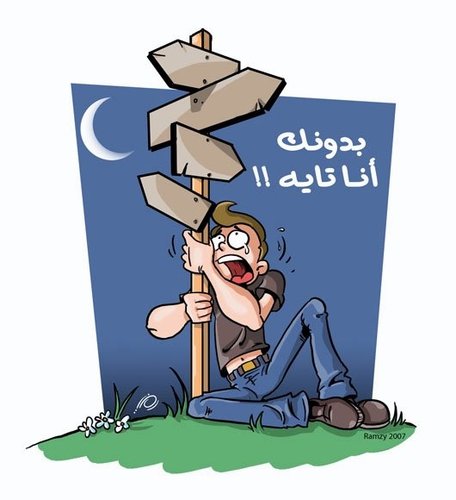 In my cartoons, I try to show my own perspective, not the political situation as a whole. I draw cartoons about every day situations – about love and friendship and about how the occupation affects our lives.
In my cartoons, I try to show my own perspective, not the political situation as a whole. I draw cartoons about every day situations – about love and friendship and about how the occupation affects our lives.
For example, since I am from Ramallah, I couldn’t marry a Palestinian girl from Jerusalem. The whole relation was very stressful and even dangerous for her: Israel might have taken away her ID papers and kicked her out of Jerusalem just because she slept outside the city limits. I drew a lot of cartoons about this situation and about how I lost my love because of it. I also draw about how I am not able to meet my friends because of the wall. All of these are very personal issues. I can’t see them as an abstract political crisis; it’s simply personal pain.
When I draw cartoons, I look for that tiny light that might draw a smile despite the bloody scenery. Young people here have to face multiple problems: their studies, love, work, family and the occupation. Forcing them to smile even at the darkest times is how I fight the occupation.
Is it possible to sum up the position of the Palestinian people toward Israel or are there differences between certain groups?
People are people on either sides. But the problem is not so much between Israelis and Palestinians and it’s definitely not a war of religions. Two plain words: the occupation and the settlements. That’s where the trouble lies. Shortly after the Oslo agreement, Israelis were visiting Ramallah and the other Palestinian cities almost on a daily basis. 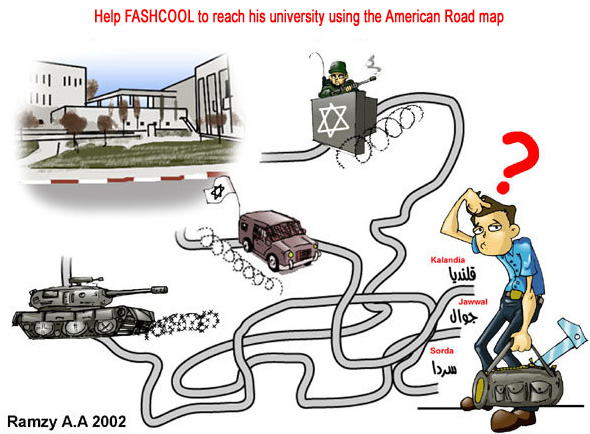 Even today, the economic relations between the West Bank and Israel are more important than the European market. But the settlements eat up Palestinian land and cut off the roads between our cities. Israel even controls over 80 percent of our water supply. They sell our own water back to us.
Even today, the economic relations between the West Bank and Israel are more important than the European market. But the settlements eat up Palestinian land and cut off the roads between our cities. Israel even controls over 80 percent of our water supply. They sell our own water back to us.
But when the Israeli government finally accepts the fact that we must and will have our sacred right of freedom and independence, when they demolish the apartheid wall, you will see how fast wounds can heal.
You say that the West Bank Wall is one important obstacle on the way to peace. What is your reaction to the Israeli argument that the barrier has effectively prevented suicide attacks and thus saved hundreds of lives?
Actually, my problem is not with the wall itself. It’s rather that it was built on our side of the border. On lands inside the 1949 green line which is recognized by the UN as the border of the Palestinian territories.
The wall cuts West Bank into blocks and ghettos with electronic gates between them. For instance, the city of Qalqilyah is completely surrounded by a 9 to12 meter wall. There is a single gate that opens and closes depending on the mood of the Israeli soldiers guarding it.
The wall is a tool to seize more ground from us and to protect settlements. It’s a tool to maintain the occupation, not to protect Israel.
In the past, there have been several cartoons uploaded to toonpool.com that comment on the Palestinian conflict in an aggressive way that is sometimes pretty close to being anti-Semitic…
Paul, if you lived in Palestine for less than one month you might begin to think the same. Yesterday my brother was escorting our dad in an ambulance from Jordan. My dad is dying … and they did not let my brother stay with him. There was no one to hold his hand. Not to mention they forced the doctors to switch ambulances at the border.
I do my best to separate between religion and politics. I almost never use the Star of David. Instead, I use “צה”ל” (“Tzahal”), the acronym for Israel’s military forces. It’s not the Jews but the state of Israel that has committed war crimes against myself and against my people.
As for other cartoonist… You see, I can’t blame them because Israel made it very hard for cartoonists to separate religion from politics.
This question might be a bit naïve: I noticed that most of your characters have a very “western” look. The only reference to a Muslim society I’ve found was that woman wearing a long dress in the background of your “beach” cartoon. What are your reasons for doing it that way?
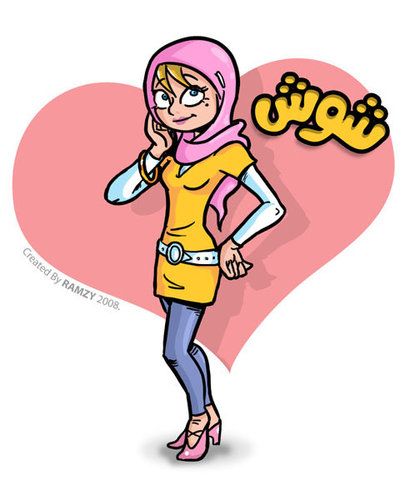 Actually, this is what we are. Palestine is neither Afghanistan nor Saudi Arabia. We are more moderate than you might imagine. Islamic costumes and ways of living only came up in the past 15 years. They are a part of the growth of fundamentalist Islam which has several reasons. There is the failure of development in several Arab countries, for example. And there are some oil states in the Gulf region that actively support extremist views like Wahhabism.
Actually, this is what we are. Palestine is neither Afghanistan nor Saudi Arabia. We are more moderate than you might imagine. Islamic costumes and ways of living only came up in the past 15 years. They are a part of the growth of fundamentalist Islam which has several reasons. There is the failure of development in several Arab countries, for example. And there are some oil states in the Gulf region that actively support extremist views like Wahhabism.
In fact, I’ve drawn several cartoons with females wearing so-called Islamic dresses. But, again, you would be surprised to see what kind of dresses we have here. Women are women anywhere in the world. They will search for beautiful clothes no matter where they live.
As for me, I am a practicing Muslim., but I do live in a global era. You and me, we share values and a way of life. I watched every episode of Saved by the Bell even when I lived in a camp in Jordan. Michael Jackson is my favorite singer and Steve Irwin was my hero. I cried when I heard that he was dead. This is not a Western era anymore, it’s a Global culture with a Western look, don’t you think?
Thanks for your time!
Paul Hellmich
© toonpool.comTags: Israel, Midde East, Nahost, Palestine, Ramallah, Ramzy A. Taweel
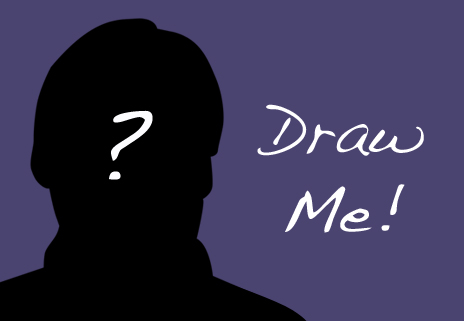
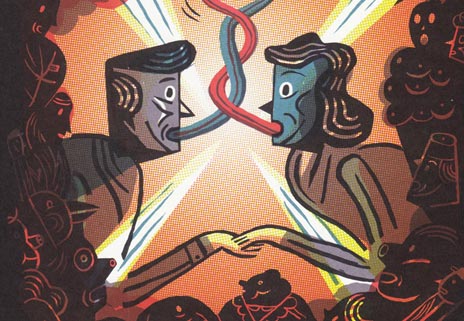
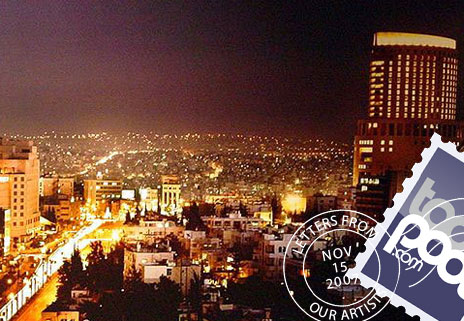
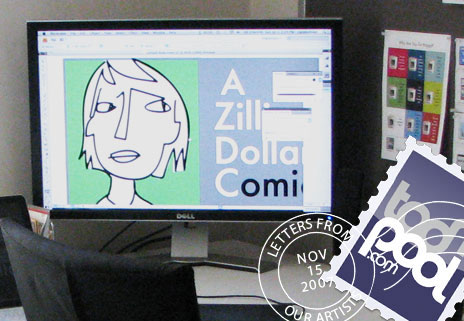
[...] en dergelijke. Ik heb over dit probleem gesproken met de Palestijnse kunstenaar Ramzy A. Taweel (Western culture and the Wall). Andere “joodse symbolen” die gebruikt worden in spotprenten zijn niets anders dan [...]